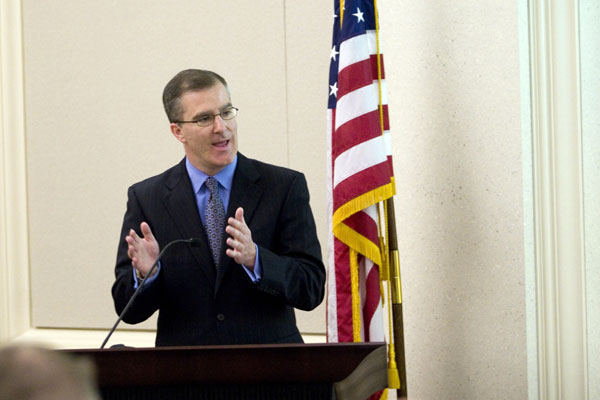
By David Hubbard

Seven years ago the Rochester Genesee Regional Transportation Authority, Rochester, NY, was essentially in the tank. Facing a $27.7 million deficit, the inevitable threats of layoffs, service cuts and increased fares cast pallor over the organization like the sulfurous stench from Mordor, just thinking back on Lord of the Rings.
Like Frodo, the onus to set it right once and for all fell to the new CEO, Mark Aesch. His complete telling of his quest unfolds in his recently published book, Driving Excellence. It is every bit as harrowing and uplifting as the Hobbits’ adventure.
In his epic, the orcs Aesch battled were hardheaded union members, vehement advocacy groups, complacent bureaucrats and staid management. He fought vehemently, absolutely convinced a public organization will flourish financially under the performance-driven management style exhibited in the private sector, provide greater value to the taxpayers and excel in its stewardship of public service.
Starting with a bedraggled army drawn from the status quo, a depleted but power-driven Authority lording over demoralized, unmotivated employees, Aesch struggled to launch the RGRTA Driving Excellence initiative in 2004.
He counseled and struggled with his troops to create a more efficient no-ego corporate culture that required the commitment and investment from all the employees to save the company. His top priority was to pry them loose and empower them by encouraging their candid assessment of the situation and engaging them in the solution — regardless of title and position in the rank-and-file.
Gone were the free food grab at the Christmas party, high salaries for low performance and the expectation of the usual bailout that had always made up the difference. In place were emboldened employees whose unchained voices spoke to more attentive company leaders. Their frontline experience and insights proved pivotal in saving jobs and making economically-sound adjustments that actually improved service as opposed to layoffs and route cuts.
The Shire for Aesch was the family farm in upstate New York where he grew up feeding the cows. The best of times and the worst of times, his formative years on the farm served as his analogy for both what to do and what not to do to achieve success at RGRTA.
One year later, he realized the organization would never align and work toward a common purpose without first clarifying the vision, redefining the mission, and mapping out the strategies to reinvent this public agency along the model of a private company. Aesch describes how he formulated the pillars to support the Driving Excellence strategic plan — not without a lot of pushing and pulling among everyone in the company to ensure the vetting of every idea.
Simply put, the comprehensive strategic plan centers on putting buses where people want to go, when they want to go there. Aesch has gone to great length in this book to explain how the leadership team poured its souls into the infrastructure to make this happen. Briefly, it rests solidly on five carefully crafted management pillars that support the vision of the strategic plan to remain innovative, robust and financially healthy.
Seven years into Aesch’s tenure, RGRTA now claims a $32 million surplus, amounting to a $60 million improvement to the bottom line, while increasing ridership with more efficient scheduling and reducing its reliance on taxpayer dollars.
The new practice of adapting policies that make perfect sense and can also be substantiated by sound research data and analysis has changed everything at RGRTA. How strict adherence to the broader strategy put an end to the Reign of Finance and subordinated the former company rulers to a more accountable relationship with the leadership team is a particularly compelling lesson.
In an awakening narrative, the book documents the proactive conversations and courageous steps Aesch and his leadership team have taken to achieve these higher levels of efficiency, productivity and service. I am not at all out on the limb to call Driving Excellence, with its candid storytelling, a must-read for everyone in the transit industry.
